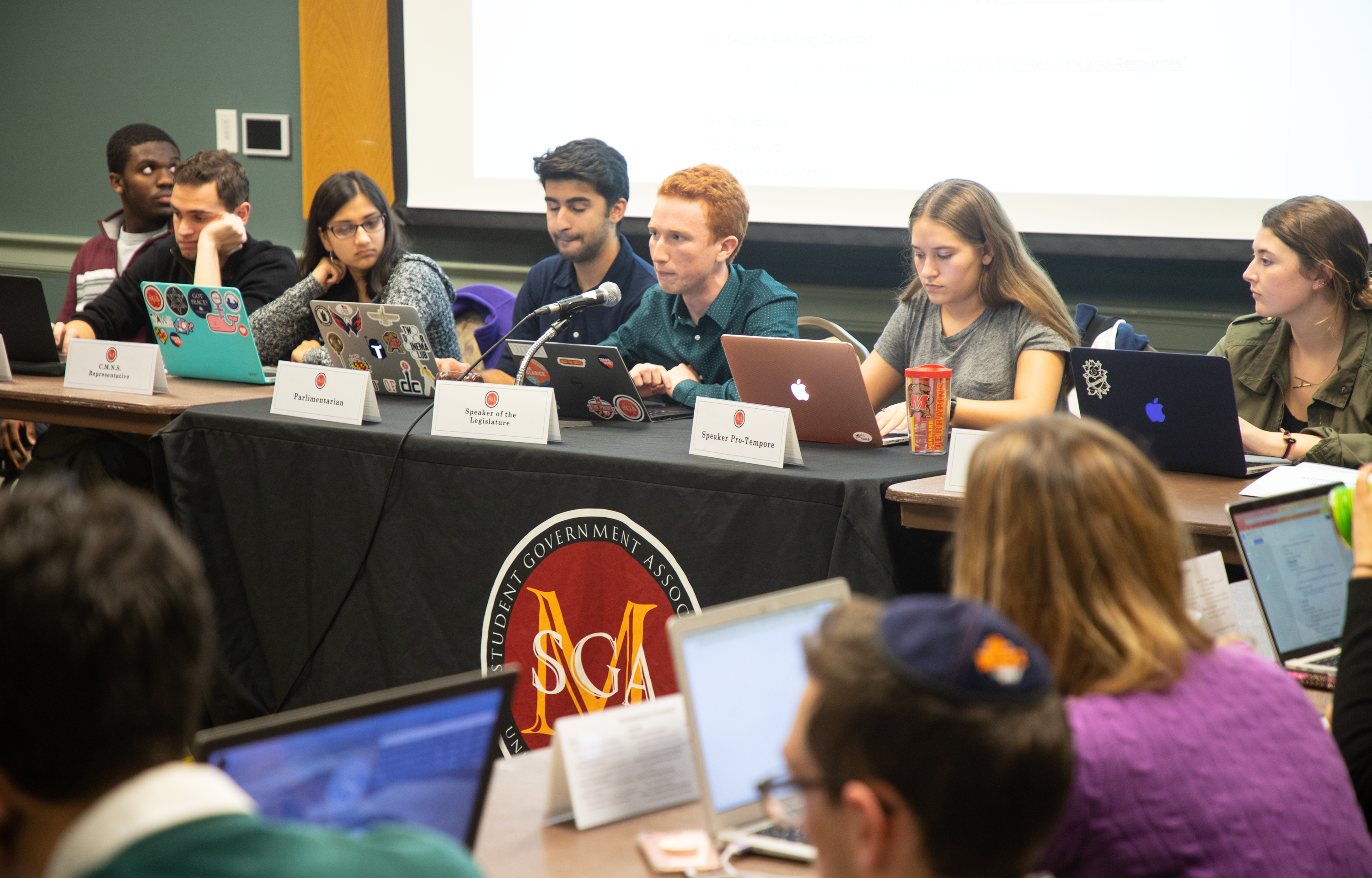The University of Maryland has pledged to achieve carbon neutrality by 2050. But the SGA wants that deadline to be pushed up 25 years.
In a Nov. 5 letter to university President Wallace Loh and the University’s Sustainability Council, Student Government Association president Jonathan Allen and sustainability director Amelia Avis wrote that they hope to count on “continued action towards a low-carbon future” from this university.
The letter, which comes amid ongoing sustainability efforts from the SGA, is a response to a United Nations report released on Oct. 8 urging countries to commit to carbon neutrality. The report cited the benefits of reducing global warming from 2 to 1.5 degrees Celsius, noting that “by 2100, global sea level would be 10 cm lower.”
[Read more: You’ve heard of AlcoholEdu. Now, UMD students are working on GreenEdu.]
Though the UN’s goal — and this university’s goal — is to achieve carbon neutrality by 2050, the SGA felt it could happen much sooner.
“Maryland has traditionally branded itself a leader,” Avis said. “If they really want to be a leader, [the goal] should be pushed up.”
Numerous other schools — including the universities of Florida, Vermont and Montana, have already taken on the 2025 goal.
On Oct. 31, the SGA unanimously approved a resolution to allocate the yearly sustainability fee paid by undergraduate students toward fully offsetting undergraduate commuter emissions. The Nov. 5 letter said this plan will help the university to “reduce emissions by around 11,000 metric tons of CO2 equivalent and get seven percent closer to carbon neutrality.”
[Read more: UMD will launch a $3 million center for grad students to study sustainability]
The proposal was approved by the university’s Office of Sustainability on Nov. 12. The funds will go toward local projects such as methane capture at landfills and tree planting. Thus, with its approval, Avis said the student body has “immediately erased 7 percent of the university’s overall remaining carbon emissions.”
This was one of the three main initiatives that were presented in the letter. The two others revolve around reducing other transportation emissions, such as “UMD fleet vehicles,” and altering the university’s power plant.
To be realized, the 2025 goal would first have to be endorsed by the sustainability office, which would make an amendment to its original Climate Action plan. Then comes the implementation of sustainable projects to reach this goal.
Mark Stewart, the office’s sustainability manager, said he feels the 2025 goal would be a significant logistical challenge for the university.
“We don’t know yet as a university if we can achieve it by 2025,” Stewart said. “[It] may be possible, but we do need to develop the final strategies for getting there.”
The university has already successfully halved carbon emissions three years early — a goal that was originally set for 2020. However, achieving full carbon neutrality is a much larger feat.
Stewart said he is also hopeful the university can reduce commuter emissions for graduate students, professors and others with the increased attention to ride-sharing apps and promotion of the Purple Line.
Avis, a senior government and politics major, added that this university’s Department of Transportation Services could implement electric-powered buses to reduce on-campus emissions, and that the university could build more dorms on and around campus to decrease the number of students who need to commute.
Stewart said the biggest challenge of the three goals would be the power plant. It would be a huge effort to make a university sustainable that is this size and heated, cooled and powered by the plant, Stewart said.
Although Avis shared similar concerns, the SGA’s letter included discussion of a startup by Maryland alumni that has figured out how to transform carbon emissions coming from the plant into algae products that can be sold.
Avis said that after they are sold, 3 percent of the profit would be given back to the university. The algae would be grown in a warehouse near campus, which she hopes would be open to visitors as an attraction.
The university has been trying to figure out how to expand the power plant by 2024. With this new plan, Avis said that it is important to make sure the future plant doesn’t produce even more emissions than before.
“We need to push [the administration] to search for a solution that is responsible instead of investing in something that will increase our carbon footprint,” Avis said.
Avis said that she would also like to see solar panels on academic buildings and Xfinity Center, as well as efforts to protect green spaces on campus.
Allen, a senior government and politics major, said he hopes the university recognizes the urgency of these plans and that moving the date up will help the university focus on a target.
“We are a leader in the nation on sustainability and energy innovation, and we do great work in that field,” he said. “But that doesn’t mean we can’t be doing better.”



